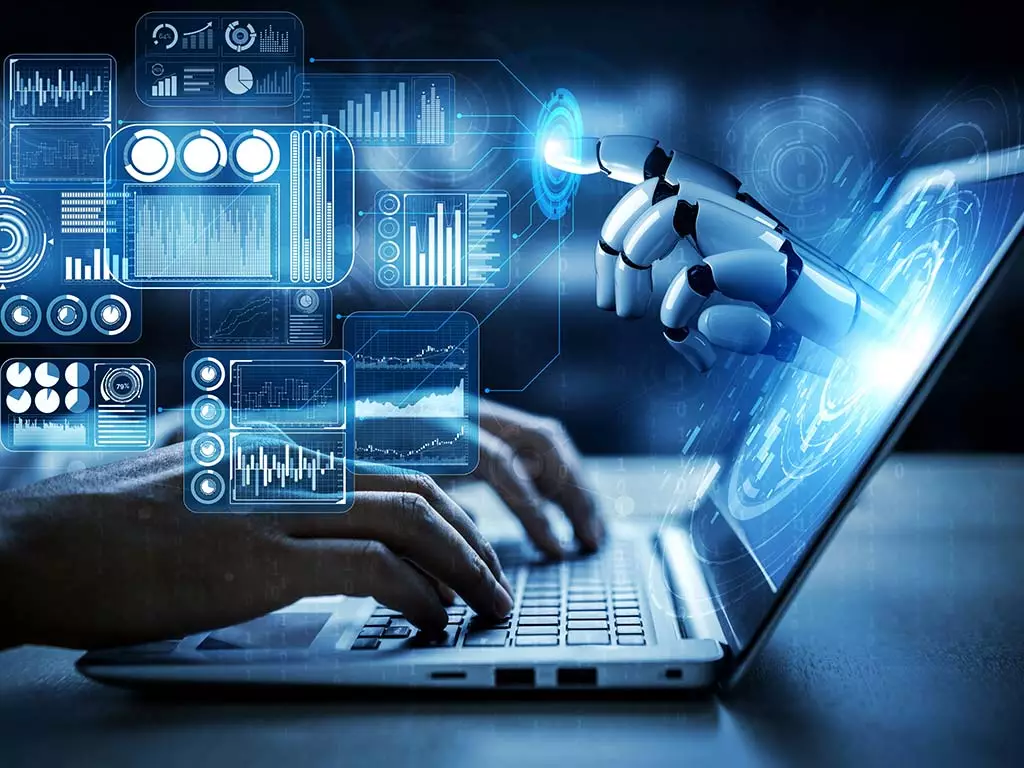Transforming Industries with Intelligent Automation

Artificial Intelligence (AI) is redefining the way businesses operate, providing innovative tools that enhance productivity, streamline decision-making, and unlock new levels of efficiency. No longer confined to research labs, AI-powered applications are now integrated into daily business operations, consumer technologies, and industrial systems, driving a new era of digital transformation.
From automated customer service bots to self-learning recommendation engines, AI tools are reshaping industries by handling complex tasks that once required human intervention. These applications are not just making processes faster; they are making them smarter and more adaptable to real-world challenges.
In this article, we explore some of the most influential AI-powered tools and applications, their impact on industries, and the challenges businesses face in successfully implementing AI-driven solutions.
1. AI in Workflow Automation: Enhancing Efficiency and Productivity
One of the biggest advantages AI offers businesses is automation—eliminating repetitive, time-consuming tasks and allowing employees to focus on higher-value work. AI-powered automation tools are now essential in industries ranging from finance and healthcare to retail and logistics.
A. AI-Driven Document Processing and Data Entry
- AI-based optical character recognition (OCR) tools like ABBYY FlexiCapture and Google Cloud Vision AI automate the extraction of information from invoices, contracts, and reports.
- AI-driven data classification systems organize and sort documents, reducing human error and speeding up processing times in industries such as insurance and legal services.
- Conversational AI assistants are streamlining HR processes by handling leave requests, payroll inquiries, and employee engagement tasks.
B. AI in Email and Communication Management
- AI-powered tools like Grammarly and Crystal Knows analyze emails and written communication, improving grammar, tone, and effectiveness.
- AI-powered inbox assistants automatically categorize emails, prioritize important messages, and suggest responses based on past interactions.
With AI automating essential workflows, businesses are increasing efficiency, accuracy, and overall productivity.
2. AI in Creative and Content Generation
AI’s role in creative fields is growing rapidly, with applications capable of generating high-quality text, images, music, and even video content.
A. AI-Generated Text and Writing Assistance
- NLP models such as GPT-2 and T5 are powering content creation tools, assisting writers with drafting articles, summarizing information, and even generating creative storytelling.
- Platforms like Jarvis (now Jasper AI) help marketers create ad copies, blog posts, and email templates in a matter of seconds.
B. AI-Driven Image and Video Editing
- AI-powered design tools like Adobe Sensei and Runway ML assist graphic designers by automating background removal, enhancing image quality, and generating unique artwork.
- AI-based video editing platforms automatically edit footage, adjust lighting, and add effects, making professional-level content creation more accessible.
These AI tools are not replacing creativity; rather, they are enhancing human capabilities, allowing professionals to work faster and more efficiently.
3. AI in Personalized Recommendations and Consumer Insights
Personalization is becoming a key factor in business success, and AI is at the heart of personalized marketing, e-commerce, and user experience design.
A. AI-Powered Product Recommendations
- E-commerce platforms like Amazon and Shopify use AI-driven algorithms to analyze browsing history, past purchases, and user behavior to offer highly personalized product recommendations.
- AI-powered tools like Dynamic Yield and Adobe Target help businesses customize website experiences based on real-time customer interactions.
B. AI in Predictive Consumer Analytics
- AI-driven predictive analytics platforms analyze vast amounts of consumer data, helping businesses anticipate demand and optimize inventory levels.
- AI tools help businesses identify customer churn risks and suggest personalized retention strategies, boosting customer loyalty.
By leveraging AI-powered analytics, companies are creating deeper customer relationships and improving conversion rates.
4. AI in Cybersecurity and Risk Management
As businesses become more digital, cybersecurity threats are also evolving. AI is playing a critical role in threat detection, fraud prevention, and risk assessment.
A. AI for Threat Detection and Network Security
- AI-powered security solutions like Darktrace and CrowdStrike Falcon use machine learning to detect anomalies in network traffic, identifying cyber threats before they cause harm.
- AI-driven endpoint security tools automatically flag suspicious login attempts and unauthorized data access, helping companies protect sensitive information.
B. AI in Fraud Prevention
- Financial institutions use AI-driven fraud detection models to identify unusual transaction patterns and prevent fraudulent activities.
- AI-powered credit scoring models analyze alternative financial data to assess risk and prevent loan defaults.
As cyber threats become more sophisticated, AI-driven security measures will continue to be essential for businesses protecting their digital assets.
5. Challenges in AI Tool Adoption
Despite the clear advantages AI tools offer, businesses face several challenges in successfully implementing AI solutions.
A. Data Privacy and Ethical Concerns
- AI models rely on large amounts of user data, raising concerns about privacy and regulatory compliance.
- Governments are introducing stricter regulations, such as GDPR and CCPA, to protect consumer data from being misused.
B. Cost and Implementation Barriers
- Developing and integrating AI-powered tools requires significant investment in infrastructure, training, and maintenance.
- Many businesses struggle with the lack of AI expertise, making adoption more challenging.
For AI to be truly effective, organizations must invest in ethical AI frameworks, robust data protection policies, and workforce upskilling programs.
Final Thoughts: The Future of AI-Powered Tools and Applications
AI-powered tools are no longer a luxury; they have become a necessity for businesses looking to scale and innovate. Whether it’s automating routine processes, enhancing creativity, personalizing customer interactions, or improving security, AI is helping companies stay ahead of the competition.
As AI continues to evolve, we can expect even more sophisticated tools that will further blur the lines between human and machine collaboration. The future will be defined by how well businesses leverage AI to enhance their workflows, optimize decision-making, and create better user experiences.
With continuous advancements in AI, companies that embrace AI-driven solutions today will be the leaders of tomorrow.




